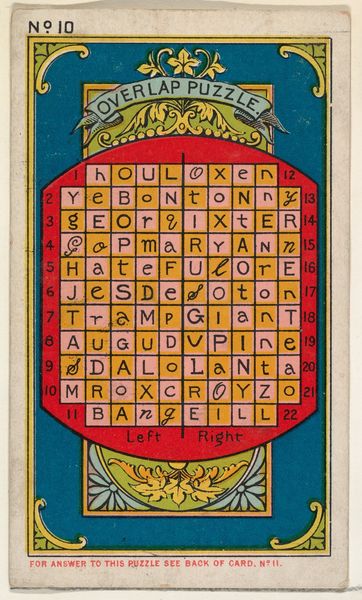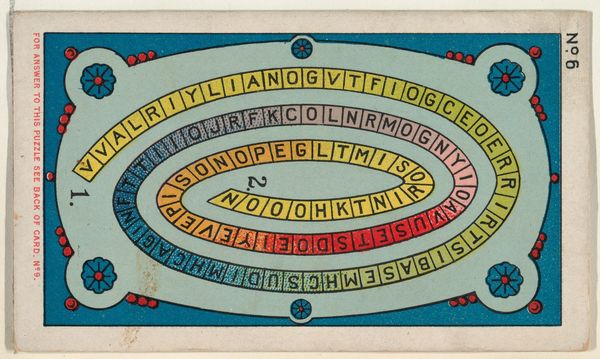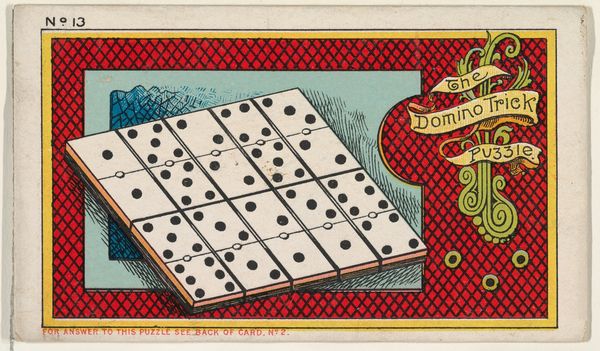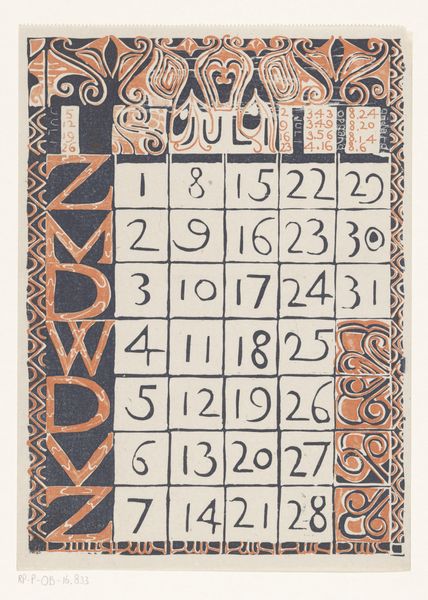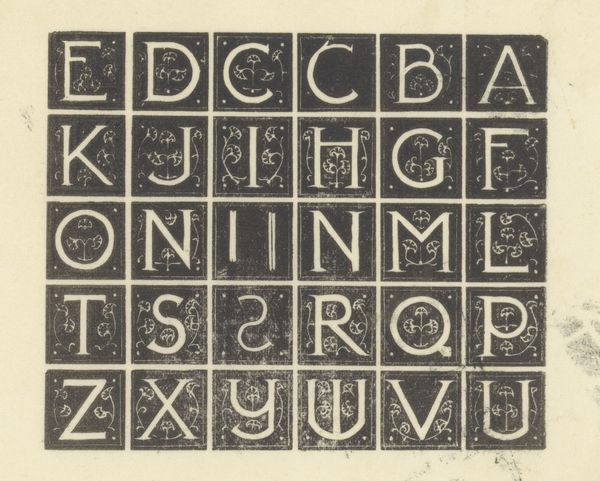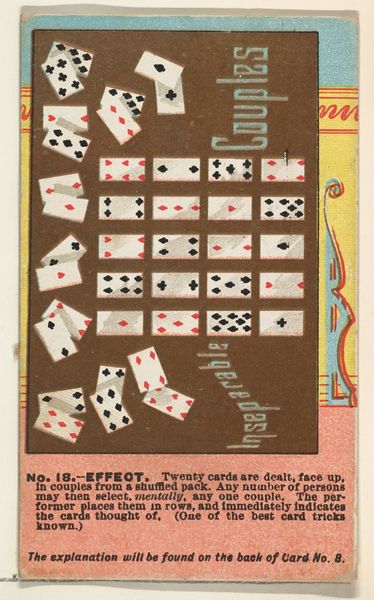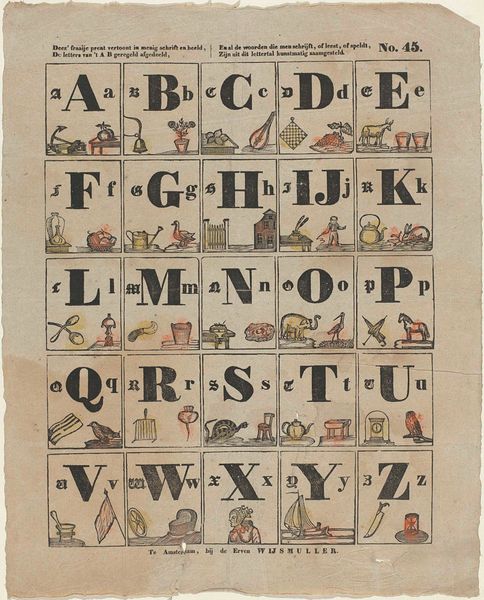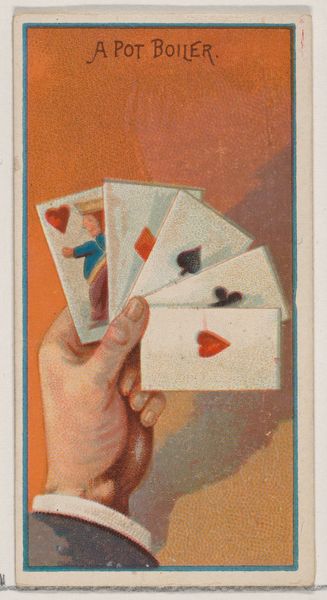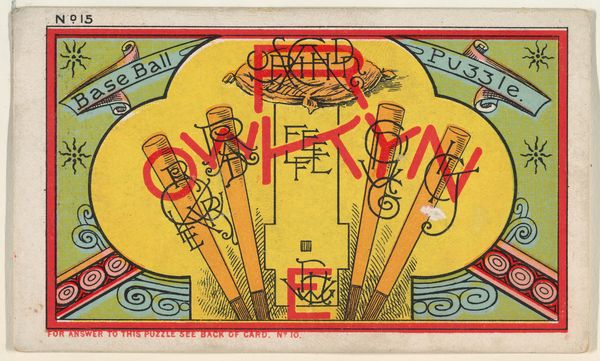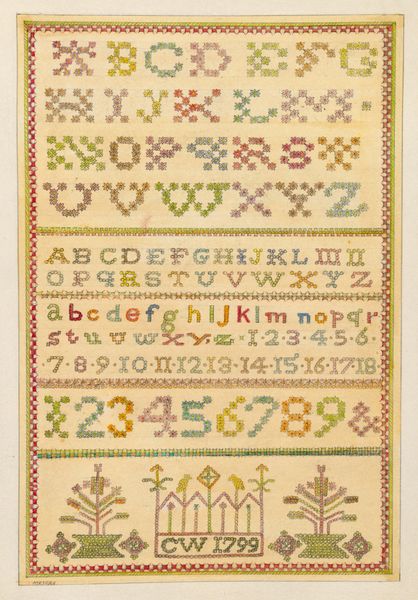
Puzzle Card Number 14, "Interlace" Puzzle, from the Jokes series (N118) issued by Duke Sons & Co. to promote Honest Long Cut Tobacco 1887 - 1891
0:00
0:00
drawing, graphic-art, print, poster
#
drawing
#
graphic-art
# print
#
poster
Dimensions: Sheet: 4 1/4 × 2 1/2 in. (10.8 × 6.3 cm)
Copyright: Public Domain
Curator: Here we have “Puzzle Card Number 14, ‘Interlace’ Puzzle,” from the Jokes series. It was created between 1887 and 1891 by W. Duke, Sons & Co. to promote Honest Long Cut Tobacco. Editor: My initial reaction is a quaint, graphic charm, especially in the limited color palette and regimented typography. It's clearly mass-produced, functional. Curator: Absolutely. These cards were included in tobacco packs as a sort of bonus, functioning as advertisements, collectables and, in this case, a brain-teaser. The cards aimed at fostering customer loyalty during a period of intense competition amongst tobacco producers. Editor: It’s interesting to think of these little cards being churned out en masse alongside the tobacco itself. The printing process must have been relatively efficient and inexpensive. The drawing seems straightforward, the layout simple to reproduce. What can you tell me about the manufacturing and the materials of these collectible cards? Curator: While the specific printing techniques used aren’t thoroughly documented, these types of promotional cards were usually printed using chromolithography, which allowed for vibrant colors at a reasonable cost. The card stock itself would have been relatively cheap, mass-produced paper. Think about the working-class consumer that it advertises too. Editor: So, what we are seeing here is really an artifact tied deeply into the industrialization of both leisure and consumption. On one side we see advertising culture growing and also the desire for affordable pleasures amongst a growing working class. How were such novelty images usually conceived in that period? Curator: The imagery in the cards was often chosen to appeal broadly to a mostly male demographic. In this “Joke” series, humor, puzzles and games served as engaging diversions, making the product memorable beyond its utilitarian value. Tobacco firms actively shaped leisure practices by interweaving education, amusement, and social norms into everyday objects. Editor: It seems this card presents an early example of gamification! What were some common applications for puzzles and “mind-games” such as this, and who engaged with it, historically? Curator: You’re right. This specific "Interlace Puzzle" would have appealed to a customer looking for a bit of amusement and mental stimulation, though likely aimed at children too! We see similar forms of such puzzles published regularly for readerships that went from the broad public of cheap papers, up to more specialised puzzle books with a restricted distribution and printing numbers. Editor: These tobacco cards remind us that the story of art is not limited to museums, high culture, or expensive media. Sometimes it hides inside a packet of tobacco.
Comments
No comments
Be the first to comment and join the conversation on the ultimate creative platform.
